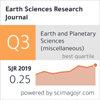非常规致密油储层特征、改造技术及产能预测
IF 0.5
4区 地球科学
Q4 GEOSCIENCES, MULTIDISCIPLINARY
引用次数: 0
摘要
非常规致密油储层特征、改造技术及产能预测。地球科学研究,24(4),507-512。本文在体积压裂水平井物理模型的基础上,建立了致密储层体积压裂水平井层间产能预测模型,研究非常规致密储层体积压裂水平井近井渗流规律。采用保角变换和迭代法求解该问题。通过与范子飞、宁正富方法的比较,对压裂水平井生产参数的优化进行了研究。分析了启动压力梯度和裂缝簇数对体积压裂水平井产能的影响。采用多元回归分析对影响因素的重要性进行排序。结果表明,起动压力梯度对制冷量的影响最为显著。芦草沟致密储层体积压裂水平井应用实例表明,所建立的层间产能模型可用于体积压裂水平井初始产能预测。因此,通过理论分析和数值模拟,建立的体积压裂水平井产能预测模型对致密储层有效开发具有一定的指导意义。非常规致密油储层特征、改造技术及产能预测本文章由计算机程序翻译,如有差异,请以英文原文为准。
The characteristics of unconventional tight oil reservoir and its modification technology and productivity prediction
How to cite item Fan, Y., Lifeng, L., Qiquan, R., Jinping, K., Mengya, X., & Jiaxin, D. (2020). The characteristics of unconventional tight oil reservoir and its modification technology and productivity prediction. Earth Sciences Research Journal, 24(4), 507-512. DOI: https:// doi.org/10.15446/esrj.v24n4.91473 The zonal productivity prediction model of volume fractured horizontal wells in tight reservoirs is established in this study based on the physical model of volume fractured horizontal wells to study the near-well seepage law of volume fractured horizontal wells in unconventional tight reservoirs. The conformal transformation and iteration method are used to solve the problem. Compared with Fan Zifei's and Ning Zhengfu's method, the optimization of fractured horizontal wells' production parameters is studied. The effects of starting pressure gradient and fracture cluster number on horizontal wells' productivity with volume fracturing are analyzed. Multivariate regression analysis is used to rank the importance of influencing factors. The results show that the starting pressure gradient has the most significant impact on capacity. The application example of volume fractured horizontal wells in Lucaogou tight reservoir shows that the zonal productivity model established in this study can be used to predict the initial productivity of volume fractured horizontal wells. Thus, through theoretical analysis and numerical simulation, the productivity prediction model of horizontal wells with volume fracturing has certain guiding significance for the effective development of tight reservoirs. ABSTRACT The characteristics of unconventional tight oil reservoir and its modification technology and productivity prediction
求助全文
通过发布文献求助,成功后即可免费获取论文全文。
去求助
来源期刊

Earth Sciences Research Journal
地学-地球科学综合
CiteScore
1.50
自引率
0.00%
发文量
0
审稿时长
>12 weeks
期刊介绍:
ESRJ publishes the results from technical and scientific research on various disciplines of Earth Sciences and its interactions with several engineering applications.
Works will only be considered if not previously published anywhere else. Manuscripts must contain information derived from scientific research projects or technical developments. The ideas expressed by publishing in ESRJ are the sole responsibility of the authors.
We gladly consider manuscripts in the following subject areas:
-Geophysics: Seismology, Seismic Prospecting, Gravimetric, Magnetic and Electrical methods.
-Geology: Volcanology, Tectonics, Neotectonics, Geomorphology, Geochemistry, Geothermal Energy, ---Glaciology, Ore Geology, Environmental Geology, Geological Hazards.
-Geodesy: Geodynamics, GPS measurements applied to geological and geophysical problems.
-Basic Sciences and Computer Science applied to Geology and Geophysics.
-Meteorology and Atmospheric Sciences.
-Oceanography.
-Planetary Sciences.
-Engineering: Earthquake Engineering and Seismology Engineering, Geological Engineering, Geotechnics.
 求助内容:
求助内容: 应助结果提醒方式:
应助结果提醒方式:


